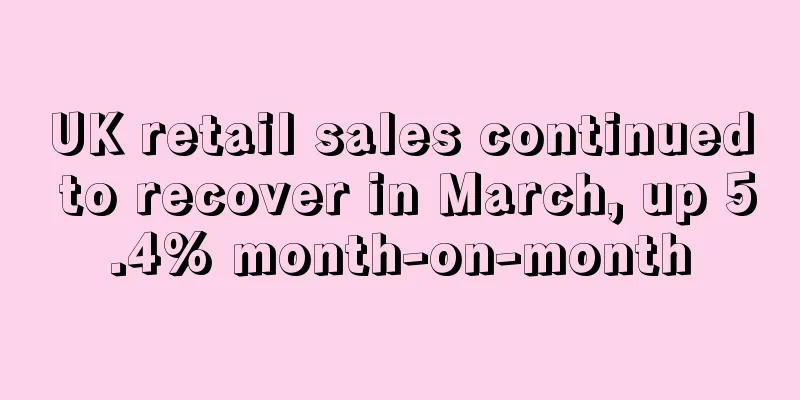A large number of sellers received a notification that the Amazon verification deadline has been advanced!

|
Verification has been a top priority for Amazon sellers in the past two weeks. Yesterday, many sellers received emails requiring them to complete verification before June 8 to avoid payment or account anomalies.
Previously, many sellers had risk warnings for account verification in their backends, but there was no verification entry. However, in recent days, more and more sellers have found that verification channels have appeared in the backends, and new verification items will appear after some verifications are completed. Sellers believe that Amazon is verifying in batches. Among various materials, the third-party payment tool statement required for bank verification is the most discussed.
The time limit has been brought forward, and Amazon verification may be carried out in batches
Regarding the time for account verification, Amazon usually notified sellers in previous notifications that the Consumer Notification Act will take effect on June 27, so it needs to collect sellers' account information and conduct verification. Sellers default to completing it before the law takes effect. But yesterday, many sellers received emails again, and Amazon required relevant verification operations to be completed before June 8 to avoid payment interruption or account deactivation.
Sellers have reported that different accounts receive emails with different verification requirements, including address verification and other types. Because there is an address verification prompt, some sellers added the same address as before. After submission, the address verification page still prompts address verification, but there is no verification entrance. Amazon emailed that the address needs to be updated before June 8. The seller opened a case and was told that he needed to wait. If Amazon needs further verification, an entrance will appear.
Last week, Amazon sent a verification notice to almost all sellers and posted a yellow warning in the backend that "account is at risk of being deactivated". However, that afternoon, the warning box in the backend of some sellers disappeared automatically, and many of the accounts that did not disappear did not have a verification entry. In response, customer service said that those without a verification window did not need to operate for the time being. The sellers breathed a sigh of relief, but did not dare to take it lightly.
Some customer service representatives also said that if there is no submission channel, they should continue to pay attention to the email or performance notification. Because the backend account warning always exists, sellers have to refresh it several times a day to see if there are any changes. As a result, in recent days, sellers have been able to find the relevant verification entrances, so they began to prepare verification materials in full swing.
Sellers speculate that Amazon first issued a unified verification prompt, and then conducted verification in batches, so the verification entrance was not presented to all sellers at the beginning. "All those who are prompted to verify should have done so. Maybe there were too many people verifying, so the interface was opened in batches."
Sellers who have passed the verification are mixed with joy and sorrow. "The verification is finally here. I am afraid that it will come, but I am also afraid that it will not come." However, even for the same seller, the verification items are gradually increasing. For example, one seller found that at first the backend only showed that address and phone verification were required, but the next day bank verification was added. Other sellers also had the same situation. There were also accounts that showed address and phone verification the day before, but the next day it showed that phone and bank statement verification were required.
"Before, I only had a √ next to 'identity', but now there is only a √ next to the address. Identity, phone number, bank account, and tax number are all checked. I guess the system slowly goes through the account information and then determines which items need to be added for verification." said a seller.
However, the Amazon system still seems to be not functioning properly. Many sellers have passed identity verification and other requirements, but the deactivation risk warning is still there, and there is no verification entry when clicking on the page.
"I have an account that passed all the verifications before, and I received the postcard not long ago. Now it prompts me to verify my phone number. I clicked it and it was verified successfully." A seller said. Another seller was in a similar situation: "I verified my identity, address and phone number, and I checked all of them. I needed to verify the payment account two days ago. Today I prepared the materials to submit, but there was no entry to submit. Now there is only an identity verification check." After a week of verification, the seller is back to square one.
The frequent occurrence of these problems has made sellers dissatisfied: the verification situation is so chaotic, the bill filling is unclear, and Amazon does not come out to guide sellers. It would be better if they could issue a specific verification guide.
How to obtain statements from third-party payment collection tools
Among the documents required for verification, the one that sellers discussed most was bank verification. This step verifies the receiving account. If the receiving account is a third party, a third-party statement can be submitted. A seller submitted a PingPong statement on Monday, and it was verified yesterday, and the background warning disappeared.
At present, sellers who have passed the customs have begun to share strategies for verification through various third-party payment collection tools. Seller @晚风微凉 introduced his operation in 知无不言:
Lianlian: 1. In the background verification of the bank account, I chose the legal person as the bank account holder's name. The legal person is Zhang Sanfeng, and the name filled in on Lianlian is sanfeng zhang (you can directly copy the bank account holder's name pinyin from the Amazon background verification bank account page) 2. Enter Lianlian, click on the store details where you receive payment, and there is an option on the right: Issue a bank certificate (issued successfully). Fill in the information, including the English name of the store entity, fill in the name of the legal person: sanfeng zhang; fill in the store backend business address: the company address in the Amazon backend seller account information (in Chinese, copy all except the phone number directly) 3. After downloading, it is a PDF file named as: ACCOUNT_STATEMENT_numbernumbernumbernumbernumbernumber
PingPong 1. Same as above, fill in the legal person in PingPong: sanfeng zhang 2. Enter PingPong, click Platform Payment on the homepage > Store Management > Payment Account > Apply for Bank Certificate > Bank Certificate Document 3. Fill in the name of the account holder: sanfeng zhang; account holder address: the company address in the Amazon backend seller account information 4. After downloading, it is a PDF file named: Certified bank letter
There are also some details to consider, such as how to fill in the "seller address" on the PingPong statement?
Some sellers copied the Chinese company address and filled it in the "Company Address and Telephone Number" column in the "Business Information" and passed the verification; some sellers said that they filled in the company name, but the bank verification only said that the account name must be consistent and did not mention the address, so they did not fill in the company address and only wrote the company name and legal person, and passed the verification two days later.
Verification campaign: nearly 100,000 sellers have modified their information
This round of account verification has caused a lot of anxiety for sellers, and domestic American sellers are no exception. The Amazon forum has exploded.
According to the Consumer Notification Act, in order to protect online shoppers from unknowingly purchasing counterfeit or stolen goods and prevent criminals from taking advantage of the anonymity of the market, not only the Amazon platform, but also other markets such as eBay, Etsy, and Walmart are required to "collect, verify, and disclose certain information about a large number of third-party consumer product sellers to inform consumers."
The bill defines a low threshold for sales, so almost all sellers need to update or verify their information one month before the regulations take effect. Marketplace Pulse research shows that nearly 100,000 Amazon sellers have changed their company names or addresses in the past few weeks, which is 30 times more than in the past. Usually, only a few thousand sellers update their company information in a month.
After this verification, some accounts will inevitably fail to provide accurate information and will have to be abandoned or deactivated. However, for most sellers, verification is troublesome but not dangerous, and they hope to resolve it as soon as possible. "I hope I don't have to go through this anymore, or I'll have no time to operate," said the seller. |
<<: Anker is fully committed to developing ChatGPT. Will multiple positions be replaced?
>>: Annual subscription also blocked accounts! Independent website sellers can’t bear it anymore
Recommend
What is Newme? Newme Review, Features
<span data-docs-delta="[[20,{"gallery"...
Twitter announced its entry into e-commerce, will cross-border sellers usher in a new "trend"?
Twitter has announced in its second quarter repor...
What is Turing Search? Turing Search Review, Features
Turing Search is a foreign trade marketing and cu...
What is CorvusPay? CorvusPay Review, Features
CorvusPay is a licensed payment institution of th...
What is Zenkai Sports ? Zenkai Sports Review, Features
Zenkai Sports , a U.S. sports apparel provider, u...
There are many opportunities for sellers! 60% of fashion consumers prefer to shop on Amazon
According to foreign media reports, in the UK, on...
Cross-border merchants prepare for overseas summer promotions during 618, Cainiao launches six measures to help Chinese products go global
On June 17 , Cainiao International launched six m...
What is OMSGuru? OMSGuru Review, Features
OMSGuru makes multi-channel retail business simple...
Vietnam's online retail market is expected to reach US$39 billion, with these categories attracting the most attention from consumers
According to the report, the scale of online reta...
What is ca.ninjiom? ca.ninjiom Review, Features
ca.ninjiom , also known as Kyoto Ninjiom, is base...
North American live shopping platform NTWRK completes $50 million in financing
According to foreign media reports, NTWRK, a lead...
20 million audiences, second-hand goods are popular in the United States
It is the peak sales season, and coupled with the...
A quarter of UK consumers plan to increase spending on Black Friday, and the hottest categories are revealed!
Black Friday is just around the corner, and many ...
What is Xinyi Supply Chain? Xinyi Supply Chain Review, Features
Xinyi Supply Chain (Zhejiang Xinyi Supply Chain Ma...
Amazing! Post-90s CEO wins nearly 1 billion yuan in financing
In recent years, the intelligent robot industry h...









